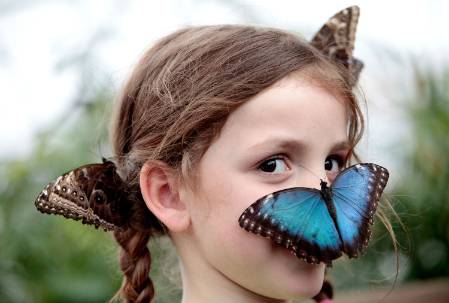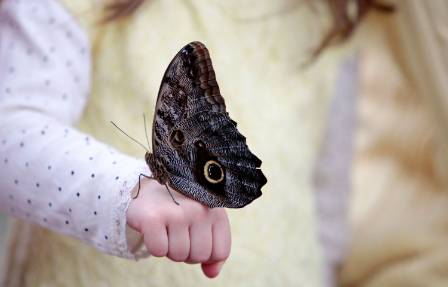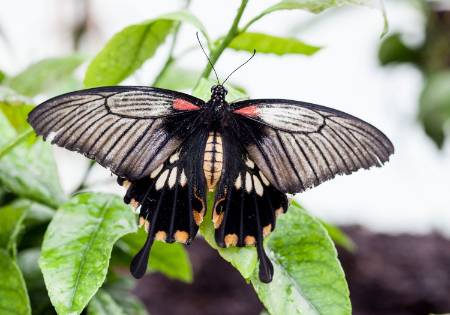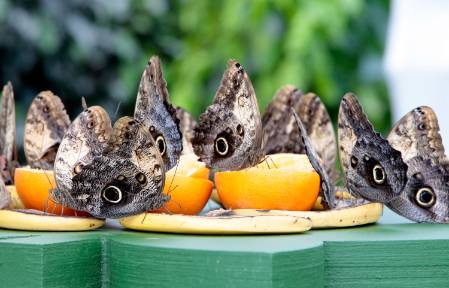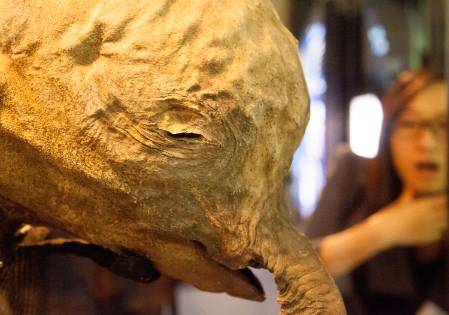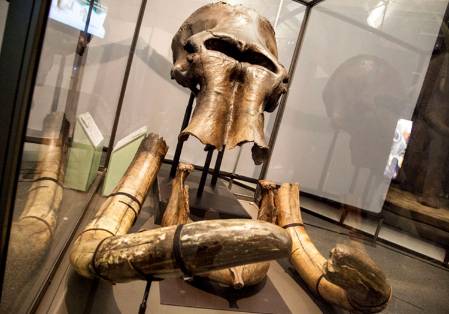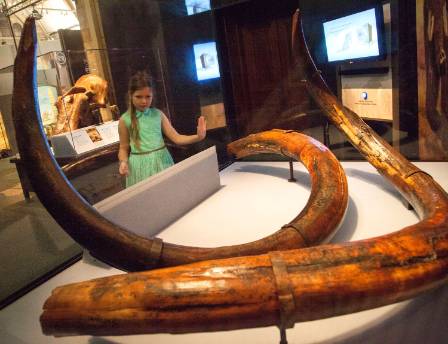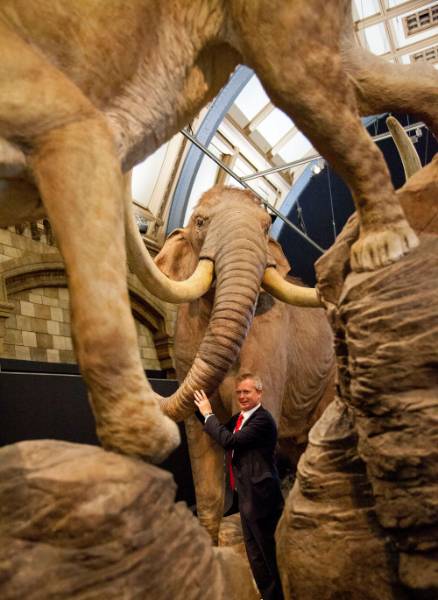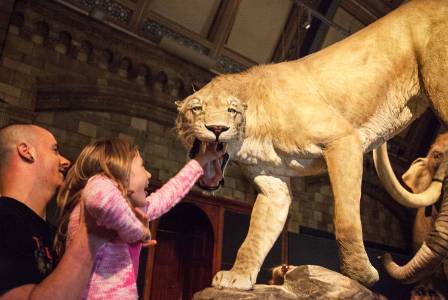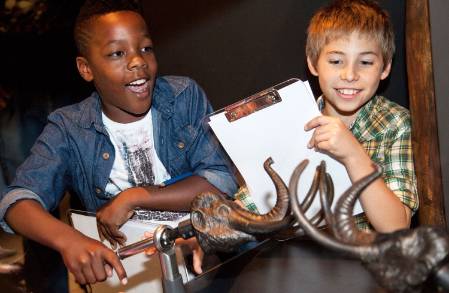Want to create your own earthquake? Extract some DNA from a strawberry, or try your hand at replicating Archaeopteryx feathers?
Our Nature Live team have been very busy coordinating many of the activities and displays for tonight. They guide us through some of the things you should not miss at our annual festival, celebrating European Researchers' Night. As usual, there's an energising, entertaining and enlightening mix of things to see and do and bars to socialise in. And the event is absolutely free.
Visitors admiring the giant jaws on show at last year's Science Uncovered paleontology science station. Select images to enlarge.
With over 350 scientists filling the Museum galleries to talk about their work, Science Uncovered on 26 September is your chance to meet researchers and hear about the latest discoveries first-hand. It's an evening filled with wonder, sure to amaze and inspire all who attend.
To help visitors this year, we've split the event's activities and displays into three themed areas around the Museum. So you can explore Origins and Evolution in the Red Zone, Biodiversity in the Green and Blue Zones, and Sustainability in the Orange Zone. In each of the zones, you can have a drink with scientists to chat more about these themes and any related questions.
Origins and Evolution in the Red Zone
Get the heads-up on early human habits and try some cave art in the Museum's Red Zone. Science Uncovered opens to the public from 15.00 on Friday 26 September.
In the Earth Hall galleries of the Red Zone, you can join Museum scientists to uncover hidden secrets of our ancestry. Learn about prehistoric life and have a go at cave painting. Assess the evidence and come to your own conclusion about whether ancient humans were cannibals. Learn how ice is used to tell us what life was like on early Earth. Mingle with the mammoths and discover how extinction has shaped life on Earth.
Star attractions: Boxgrove tibia and Archaeopteryx. Cave painting. Try replicating some Archaeopteryx feathers yourself!
Events in the Flett Theatre: 19.00 Professor Alice Robert's lecture on evolution. 20.30 Famelab sessions.
Biodiversity in the Green and Blue Zone
Get close to extraordinary specimens at the Corals station, a sneak preview of what's to come in our Coral Reefs exhibition opening next year.
In the Biodiversity Zone we're focusing on life in our forests and oceans, and also right on our doorsteps. Investigate rare corals and shells and discover what they tell us about our oceans - get a taste of what's to come in next year's Coral Reefs exhibition. Meet our butterfly curator Blanca Huertas and several beetle scientists who've braved wild terrains in pursuit of rare species and see their collections. Get your own specimens identified at the UK Biodiversity station. Scuttle up to the Hintze Hall balconies to help digitise our extensive beetle collection.
Star attractions: See huge and rare corals from our forthcoming exhibition. Extract DNA from strawberries and bananas. Play your part in digitising our collection by labelling a beetle image (Crowdsourcing the Collection station).
Event highlights: Join Nature Games between 18.00-22.00. Drop in to Soapbox Scientist rants between 18.00-22.00. Britain exhibition opens late, but book tickets to avoid disappointment.
Play your part: Extract DNA from a strawberry at the Forests station. Help digitise our beetle collection with our app, find out what to do at the Crowdsourcing the Collection station located in the central Hintze Hall balconies.
Sustainability in the Orange Zone
One of the most beautiful exhibits at Science Uncovered, and not to be overlooked, is the intricate microfossil tree on display at the Climate Change station in the Sustainability Zone.
The Climate Change station is bound to be a focal point of this zone, highlighting the latest scientific thinking and research on this important subject. But insects make a big appearance too, from their role in food and forensics to the importance of pest and parasite research. And head to this zone for the Attenborough Studio talks, Spirit Collection Tours and the Wildlife Garden.
Star attractions: Create your own earthquake (British Geological Survey station). Seven metre-long tape worm (Parasites and Pests station). Exquisite microfossil tree created by Chinese scientist Zheng Shouyi from foraminiferal models (Climate Change station). Sip a scientifically inspired concoction (Cocktail Bar).
Event highlights: The Wildlife Garden - open until 21.00. Sampling Space talk in the Attenborough Studio at 19.00, with a live link to the Johnson Space Centre in Houston. Crime Scene Insects talk in the Attenborough Studio at 20.00.
This is, of course, a tiny taste of what to expect on the night. For the bigger picture, grab a map when you arrive or download it below or on our website. And don't forget to do the fun Stamped on Science trail, with the chance to win a year's Museum membership, and most importantly earn yourself (or the kids) a free LOLLIPOP!
- Find out what's on at Science Uncovered on our website
- Download the Science Uncovered map
- Book tickets for Britain: One Million Years of the Human Story, open late for Science Uncovered in its last week
- Follow our Science Uncovered bloggers
Join the conversation with @NHM_London and the hashtag #SU2014.










